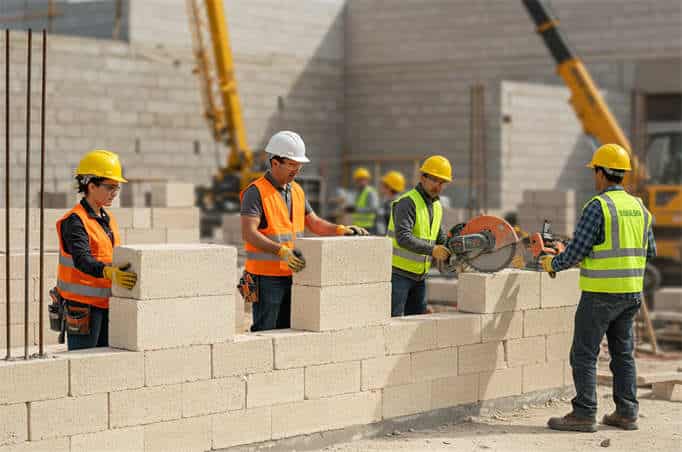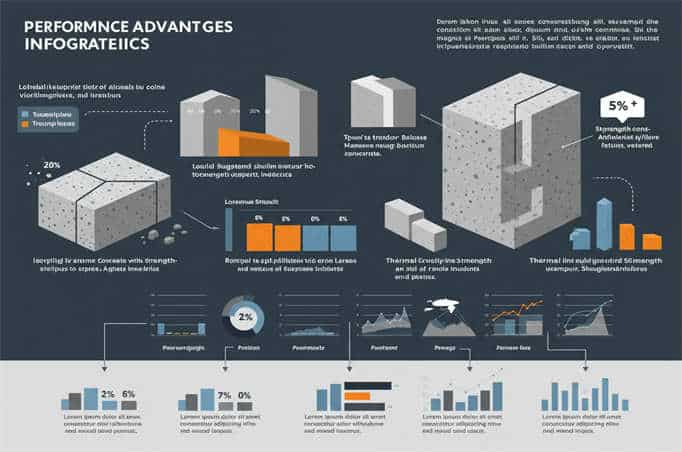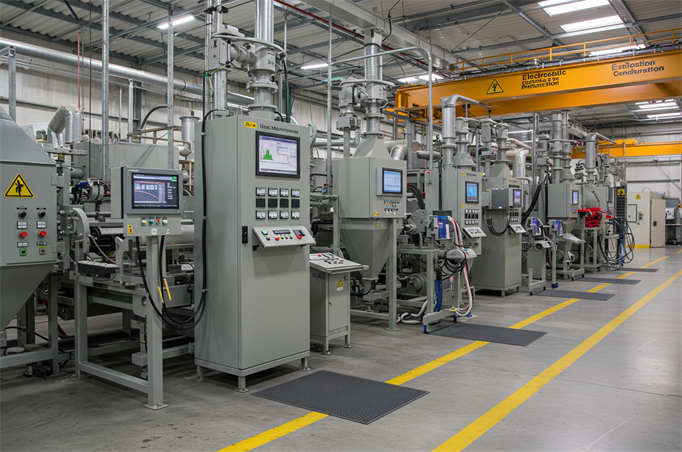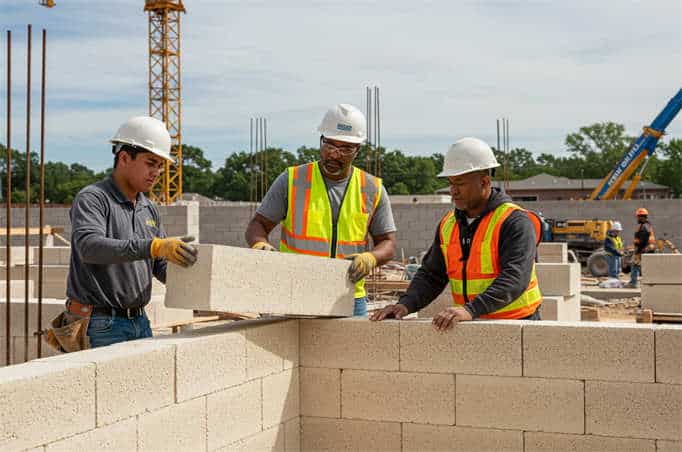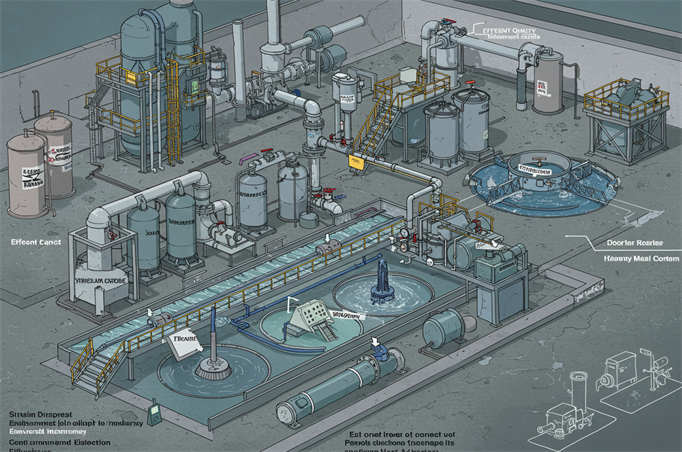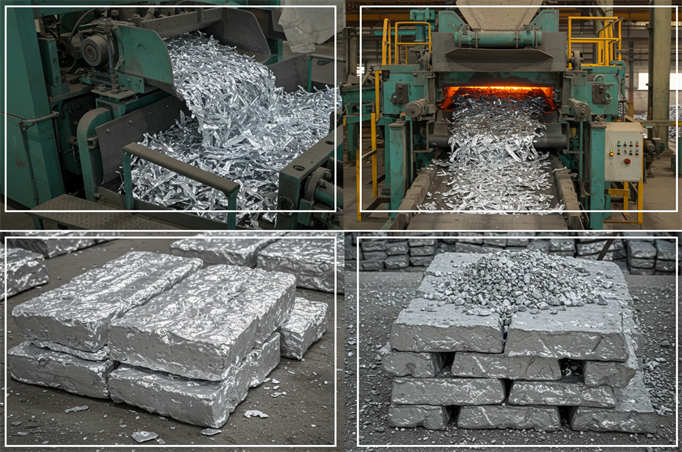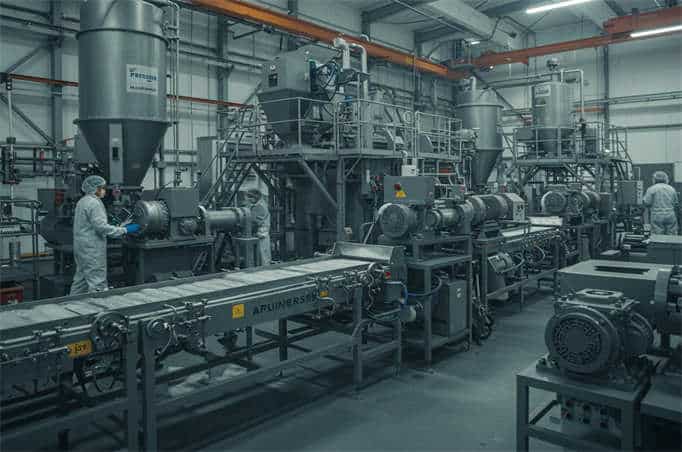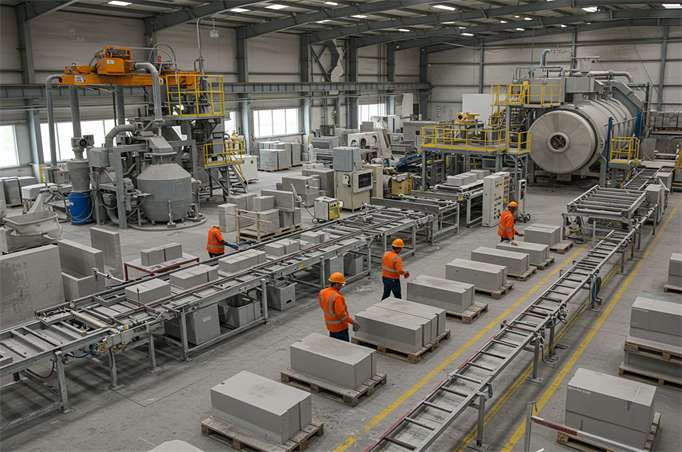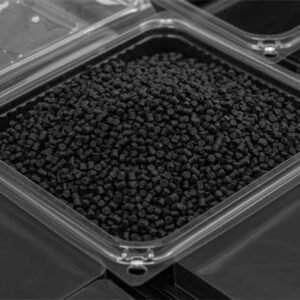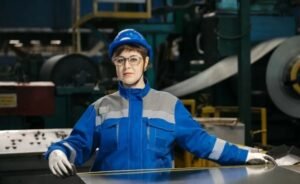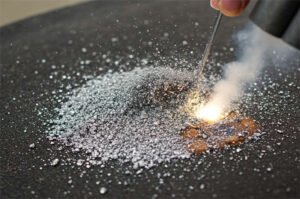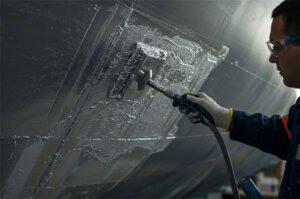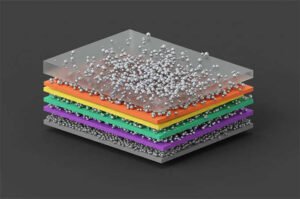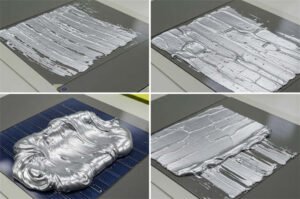At Five Star New Materials, we are proud to be a trusted partner to the autoclaved aerated concrete (AAC) industry, specializing in the production of high-performance アルミペースト—the essential ingredient that drives the efficiency and quality of Autoclaved Aerated Concrete blocks. As global demand for sustainable, lightweight, and energy-efficient building materials continues to rise, AAC has emerged as a leading solution for modern construction. But behind every exceptional AAC block lies a critical component: アルミペースト, the material responsible for creating the uniform pore structure that defines AAC’s unique properties.
Our aluminum paste is engineered to perfection, ensuring optimal gas generation, stability, and consistency in Autoclaved Aerated Concrete production. By reacting with alkaline environments, aluminum paste releases hydrogen gas, forming the precise microstructure that gives AAC blocks their lightweight, thermal insulation, and strength characteristics. This process not only reduces the density of Autoclaved Aerated Concrete blocks to as low as 500 kg/m³ but also enhances their fire resistance, acoustic performance, and adaptability to diverse climate conditions.
At Five Star New Materials, we understand that the quality of aluminum paste directly impacts the performance of Autoclaved Aerated Concrete blocks. That’s why we focus on delivering products that meet the highest industry standards, such as JC/T 407-2008 and GB/T 11968, while continuously innovating to improve efficiency and sustainability. Our advanced production techniques, including water-based formulations and patented dehydration processes, ensure minimal environmental impact and maximum reliability for Autoclaved Aerated Concrete manufacturers.
In this blog, we explore the science behind aluminum paste, its role in Autoclaved Aerated Concrete production, and how it compares to alternative insulation materials. We also examine how aluminum paste can be optimized for different climate zones, ensuring AAC blocks perform exceptionally in everything from extreme cold to humid tropical environments. Whether you’re an Autoclaved Aerated Concrete producer, architect, or construction professional, this blog will provide insights into why aluminum paste is the cornerstone of high-quality Autoclaved Aerated Concrete blocks and how Five Star New Materials can help you achieve superior results.
Autoclaved Aerated Concrete Blocks Aluminum Paste: Key Information and Benefits
Autoclaved Aerated Concrete (AAC) blocks aluminum paste is a key gas-generating material used in the production of Autoclaved Aerated Concrete. Through a chemical reaction, it forms a uniform pore structure within the concrete, granting the blocks characteristics such as light weight, thermal insulation, and heat resistance. Below is a detailed breakdown of its core information:
1. Mechanism of Aluminum Paste
- Gas Generation and Porous Structure Formation The active aluminum powder in aluminum paste reacts with water in an alkaline environment, releasing hydrogen gas and forming a gel-like aluminum hydroxide. This process creates closed pores, significantly reducing the density of the blocks to 500-700 kg/m³, only one-fifth of ordinary concrete, while also enhancing thermal insulation properties.
- Lightweight and Strength Improvement The porous structure reduces the weight of the blocks, cutting down building loads by over 40%. The even distribution of pores and the reasonable thickness of the pore walls ensure that the compressive strength can reach over 25 MPa, making Autoclaved Aerated Concrete blocks suitable for both load-bearing and non-load-bearing walls.
- Improved Construction Performance The expansion of the slurry induced by the aluminum paste reaction makes the blocks easier to cut and process, reducing the amount of cement used and lowering production costs.
2. Aluminum Paste Production Process
- Raw Material Treatment Aluminum ingots or aluminum foil scraps need to be screened to remove oxidation layers and ensure uniform granularity. When ball-milling, additives such as dispersants and corrosion inhibitors are used to enhance grinding efficiency and aluminum powder activity.
- Ball Milling and Dehydration The materials are finely milled to a particle size of ≤0.075 mm using a specialized ball mill. The water is then removed using a dehydration press, resulting in aluminum paste, which is packed and stored.
- Environmental Process Optimization Modern processes substitute traditional dry methods with tap or well water, reducing pollution and energy consumption. Some companies (like Baisheng Aluminum) utilize patented equipment to enhance efficiency, allowing for the dehydration and bagging of five machines per hour.
3. Technical Parameters and Standards
- Key Performance Indicators
- Solid content: ≥65% (GLS-65) or ≥70% (GLS-70)
- Active aluminum content: ≥90% (ensuring gas generation efficiency)
- Gas output: 40-60% within 4 minutes; ≥99% within 30 minutes
- Storage conditions: 15-20°C with a shelf life of 6 months
- Industry Standards
- JC/T 407-2008: Specifies the active aluminum content, water dispersibility, and other indicators to ensure product quality.
- GB/T 11968: Covers the performance standards of Autoclaved Aerated Concrete blocks, including compressive strength, dry density, etc.
4. Application Advantages and Considerations
- Application Effects
- Thermal Insulation and Heat Resistance: The thermal conductivity is 0.11-0.16 W/m·K, making a 20cm thick wall equivalent to a 49cm clay brick wall in terms of insulation performance.
- Soundproofing and Seismic Resistance: The internal pores absorb 41 dB of noise, and the lightweight structure reduces seismic inertia forces.
- Waterproofing and Environmental Friendliness: The absorption rate is five times slower than clay bricks, and it utilizes industrial waste such as fly ash in its production.
- Usage Considerations
- 投薬管理: Excessive aluminum powder may cause overly large pores, reducing strength. The typical dosage is 0.4 kg/m³.
- Dust Protection: Proper dust control measures are required during production to avoid harm from inhaling aluminum powder.
- Temperature Control: The ball milling process must maintain appropriate temperature control to prevent the reaction from occurring too quickly, affecting gas generation stability.
5. Market and Products
- Mainstream Products
- Models: GLS-65, GLS-70 (Jinan Boshi Chemical Technology)
- Packaging: 25 kg/barrel, iron barrel with a plastic lining for long-distance transport.
- 業界動向
- Environmental Focus: Adoption of water-based aluminum paste processes to reduce solvent pollution.
- Efficiency Enhancement: Upgraded equipment improves dehydration efficiency, such as patented dehydration presses that allow single-person operation for a full shift.
By applying aluminum paste technology properly, Autoclaved Aerated Concrete blocks exhibit significant advantages in energy efficiency, seismic performance, and construction efficiency, making them an essential material for modern green buildings.
Comparing Autoclaved Aerated Concrete Blocks Aluminum Paste with Other Insulation Materials
Autoclaved Aerated Concrete (AAC) blocks aluminum paste has substantial advantages over other common insulation materials like EPS, rock wool, and ALC panels. Here’s a comparison analysis:
1. Lightweight and Structural Performance
- Lightweight and Compressive Strength The dry density of Autoclaved Aerated Concrete blocks is 500-700 kg/m³, only one-fifth of regular concrete and one-third of clay bricks, significantly reducing building loads. Additionally, the compressive strength can reach 3.5-7.5 MPa, sufficient for both non-load-bearing and some load-bearing walls. In comparison, EPS and XPS, although lightweight, have lower strength and require composite structures. Rock wool panels have weak compressive performance and can deform when exposed to moisture.
- Seismic Resistance The porous structure results in low seismic inertia. During the Tangshan earthquake, Autoclaved Aerated Concrete buildings only sustained minor cracks, while brick-concrete structures nearly collapsed. AAC blocks outperform traditional materials in seismic performance.
2. Thermal Insulation Performance
- Low Thermal Conductivity With a thermal conductivity of 0.11-0.18 W/(m·K), a 20cm Autoclaved Aerated Concrete block wall provides the same insulation as a 49cm clay brick wall, far surpassing EPS (0.03-0.04 W/(m·K)) and rock wool (0.04-0.05 W/(m·K)).
- Thermal Inertia and Adaptability High-density products can increase thermal inertia in the south, while low-density products reduce thermal conductivity in the north, adapting to different climates. Traditional insulation materials like EPS require additional thickness adjustments, adding complexity to construction.
3. Fire Resistance and Safety
- Grade A Fire Resistance Autoclaved Aerated Concrete is an inorganic material with a fire resistance limit of over 3 hours, meeting national first-class fire resistance standards. EPS, on the other hand, is classified as B1/B2 and releases toxic gases when exposed to fire. Rock wool is also grade A, but it is more expensive.
- No Risk of Cavities or Shedding Autoclaved Aerated Concrete blocks are monolithic, eliminating the need for external insulation layers and avoiding potential risks of detachment in composite systems like EPS, which require anchoring and may crack over time.
4. Environmental and Economic Benefits
- Resource Recycling The materials used, such as fly ash and slag, account for over 75% of the raw materials, reducing solid waste and meeting green building standards. EPS relies on petrochemical products, and rock wool has high production energy consumption.
- Lower Overall Cost The unit price of AAC blocks is around 145-200 RMB/m³, with wall construction costs approximately 75 RMB/m², lower than EPS exterior insulation systems (around 120 RMB/m²). While ALC panels offer fast construction, their material costs are 30%-40% higher.
5. Construction and Functionality
- Ease of Construction Autoclaved Aerated Concrete blocks are easy to saw, nail, and plane, simplifying the process without complex columns and beams. In contrast, rock wool panels require special cutting tools, and EPS needs fireproof isolation strips, increasing construction difficulty.
- Soundproofing and Water Resistance The internal pores of Autoclaved Aerated Concrete blocks absorb 41 dB of noise and have excellent water resistance, absorbing moisture five times slower than clay bricks. EPS has poor soundproofing, and rock wool’s performance decreases when exposed to water.
6. Comparing New Materials
- ALC Panels: Although ALC panels offer superior soundproofing and fire resistance and are quick to construct, their cost (about 70 RMB/m²) is significantly higher. Autoclaved Aerated Concrete blocks provide a better cost-performance ratio for low-rise buildings.
- STP Vacuum Insulation Panels: With a thermal conductivity as low as 0.008 W/(m·K), these panels are highly efficient but are expensive (around 100 RMB/m²) and require full adhesion for installation, limiting their application.
Autoclaved Aerated Concrete Blocks aluminum paste offers balanced performance across lightweight, insulation, fire resistance, environmental sustainability, and cost. It is especially ideal for buildings with high energy efficiency and safety requirements. Although ALC panels and STP panels excel in specific scenarios, AAC remains the most cost-effective insulation solution in terms of performance for most building projects.
In today’s competitive and climate-conscious construction industry, the choice of materials matters more than ever. As we’ve explored in this blog, アルミペースト is not just a chemical additive—it is the foundation of AAC’s revolutionary properties. From reducing building loads and enhancing energy efficiency to delivering superior fire safety and seismic resilience, aluminum paste empowers AAC blocks to outperform traditional and alternative insulation materials in nearly every category.
At Five Star New Materials, we are committed to advancing the Autoclaved Aerated Concrete industry by providing aluminum paste solutions that are reliable, efficient, and environmentally responsible. Our products, such as the GLS-65 and GLS-70 series, are designed to optimize gas generation and stability, ensuring consistent performance in AAC production. With our focus on innovation, including eco-friendly water-based processes and high-efficiency dehydration technology, we help AAC manufacturers reduce costs, improve sustainability, and meet the growing demand for green building materials.
Whether you’re producing AAC blocks for residential, commercial, or industrial applications, Five Star New Materials is here to support your success. Our team of experts is ready to collaborate with you to tailor aluminum paste solutions that meet your specific production needs and climate requirements. By choosing Five Star New Materials, you’re not just selecting a supplier—you’re partnering with a leader in the AAC industry dedicated to driving the future of sustainable construction.
Ready to elevate your AAC production? Contact Five Star New Materials today to discover how our aluminum paste can transform your blocks into the building material of choice for a greener, more resilient world.

